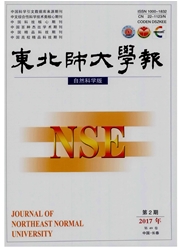

 中文摘要:
中文摘要:
居民日常的膳食消费与水资源保护、水资源节约息息相关,不同的膳食结构及消费量,其水资源消耗量也不同.探讨居民膳食消费的水足迹,可为制定合理的膳食结构,保护水资源提供依据.通过对吉林市2004--2010年不同收入水平的城市居民膳食水足迹进行量化,探讨了吉林市城市居民膳食水足迹的特征.结果表明:吉林市城市居民的人均膳食水足迹随着收入的增加而升高,不同收入人群的膳食水足迹呈现先升后降的趋势,而且各类膳食水足迹所占的比重也在不断变化.在膳食水足迹中,不同收入人群的粮食、食用植物油、猪肉、牛肉的水足迹均较高,占膳食水足迹比重的60%左右.不同收入人群膳食水足迹的差距在逐渐缩小.
 英文摘要:
英文摘要:
Daily dietary consumption is closely linked to water resources conservation, and the different dietary pattern has different water resources consumption. It can provide a basis for adjusting dietary pattern and saving water resources to probe into the dietary water footprint. According to the dietary consumption of urban residents in different income levels in Jilin City from 2004 to 2010, the dietary water footprints are calculated, and their characteristics are analyzed. The results show the dietary water footprints of urban residents increased as incomes increased, the dietary water footprints of different income groups presented a trend of rising firstly and then decreasing,and the proportions of dietary water footprint of urban residents in different income levels were also changing. The water footprints of food, edible vegetable oil, pork and beef were all higher among different income groups, which accounted for about 60%. The gap of dietary water footprint among different income groups was gradually reduced.
 同期刊论文项目
同期刊论文项目
 同项目期刊论文
同项目期刊论文
 Interdecadal changes of vegetation transition zones and their responses to climate in Northeast Chin
Interdecadal changes of vegetation transition zones and their responses to climate in Northeast Chin Assessing the characteristics of extreme precipitation over northeast China using the multifractal d
Assessing the characteristics of extreme precipitation over northeast China using the multifractal d Comparative analysis of the extreme temperature event change over Northeast China and Hokkaido, Japa
Comparative analysis of the extreme temperature event change over Northeast China and Hokkaido, Japa 期刊信息
期刊信息
